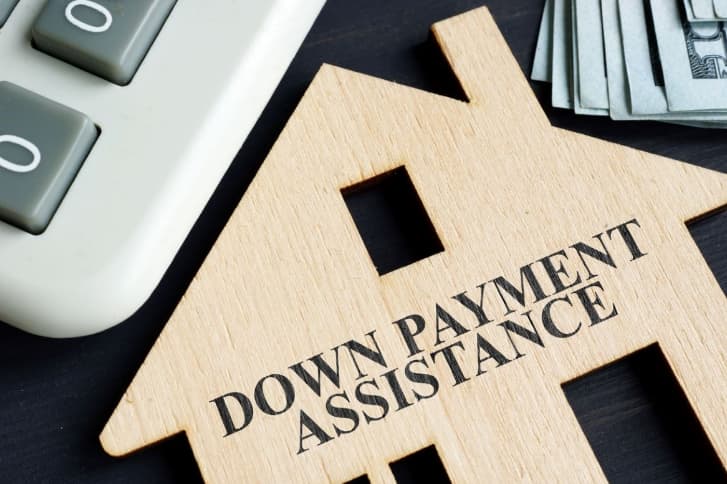Adjustable Rate Mortgage (ARM) is a type of mortgage, in which multiple options are provided to the borrower regarding the type of payment that the lender must make, in addition, there is an option to make the interest and principal payments lower than what is available in conventional mortgages, and to know all Details about adjustable mortgage follow our article.
Adjustable Rate Mortgage

ARM also allows alternative payment options for the debtor, whereby he can make payments much lower by making interest-only or minimal payments.
Since so many options offer a lower interest rate, many borrowers refinance their existing mortgage without thinking, hoping to pay less. Unfortunately, once the lower interest rates expire, the interest rate returns to traditional levels for mortgages.
Ways to use Adjustable Rate Mortgage
In a common scenario, the lender may give the borrower an Adjustable Rate Mortgage (ARM) option that allows them to select the type of payment they prefer to make each month. These options can include:
- Although the options available with the option (ARM) allow more flexibility in loan payments.
- The borrower can easily become burdened with more long-term debt than they started with, similar to other variable rate mortgages, where there is the possibility of a rapid and drastic change in interest rates on a market basis.
- Individuals who experience income fluctuations, such as in commission- or contract-based professions or being freelancers, may choose to choose an ARM mortgage option.
- If they don’t have much to do, they may decide to pay the minimum mortgage, and although this allows them to keep more money on their hands, the minimum payment can go up annually.
- In addition, the minimum payment may be reset every five or ten years in full.
Mortgage Refinancing
An adjustable-rate mortgage is re-estimated and recalculated according to a new amortization schedule, and this preceding clause means that the borrower pays less than the interest on the loan.
What is deferred interest?
The interest accrued is added to the principal balance of the loan,
and an allowable payment is made which is less than the interest due.
Adjustable interest mortgage

The main reason to look at adjustable rate mortgages is that they may end up paying lower monthly payments, the bank is (usually) encouraging you to offer a lower initial interest rate because you take on the risk of higher interest rates in the future, which is not the same with a standard mortgage. Fixed-rate, where the bank bears this risk.
When interest rates are high, the bank has difficulty offering you loans at a below-market rate
when you have a fixed-rate mortgage, on the other hand, if interest rates are low,
you simply have to refinance the loan and get a better rate.
Adjustable Rate Mortgage defaults
Unfortunately, you may have a few benefits from lowering the price, you are aware of the risk of price increases.
If that happens, your monthly payment could increase dramatically, what was previously a reasonable burden at low rates can become a serious burden when you have a variable rate mortgage, the payment can become very high and debt buildup.
Manage Adjustable Rate Mortgage
To manage the risk, you will need to choose an appropriate type of adjustable mortgage.
The best way to manage your risk is to take out a loan with “caps” or limits on the actual mortgage adjustment rate.
They may have limits on the interest rate charged on your loan,
or they may have a cap on the dollar amount of your monthly payment.
Finally, your loan may stipulate several years that must pass before the adjustment rate kicks in, such as five years in the beginning, for example. These restrictions remove some of the risks associated with variable-rate mortgages, but they can also cause some problems.
The two different models of mortgage caps can adjust to work in multiple ways There are periodic caps that set cap limits and lifetime caps Periodic caps may change depending on your rate over a specific period, such as one year Lifetime caps can also change based on the interest rate your property throughout the life of the loan.
Terms of a real estate mortgage
Terms of an adjustable mortgage include:
- That the owner of the property is competent to act.
- Also, The value of the property must be at a level consistent with the amount owed.
- If the owner of the property fails to pay the debt, the lender has the right to seize
and sell the mortgaged property, but a warning must first be sent to the debtor. - When one of the parties dies, the mortgage is not canceled but transferred to the heirs.
- If one installment is not paid and an apology is made, the lender has the right to demand that all remaining installments be paid in one payment.
- When the price of the mortgaged property increases, the owner gets the interest,
and on the other hand, if the value of the property decreases,
the borrower must compensate the lender for this deficiency.
Mortgage departments
The mortgage is divided into three levels, and they are as follows:
First: the fees
This amount is paid to complete the procedures and submit the necessary papers
to obtain approval for a mortgage loan. Among the most important fees required are the following:
- Administrative fees.
- Mandatory fee for registering the mortgaged property.
- legal fees.
- Special fees include adjusting the monthly payment amount.
- If the customer is late in making a monthly payment, a fee will be charged.
- If the customer wishes to amend the loan maturity date
or renew his loan related to the property, he will incur additional costs.
Second: the first installment
The amount needed to get the mortgage depends on the amount you get and the higher the amount paid in the beginning, the greater the perks and perks of lowering the interest rate and fees.
Third: the monthly installments
It is a specific amount that is paid monthly from the value of the loan and includes the value of the loan in addition to the profit interest.
Read more: Reverse mortgage and its most important types and features
Mortgage Features

The mortgage contract helps the owner of the property when it falls into a financial crisis,
without having to sell the property and lose it, as well:
- The owner of the property is not required to provide any additional guarantees other than the property itself, nor does he need to transfer his salary to the financing entity.
- The state supervises the installation of the property by the provisions and legislation.
- This process is beneficial for both the borrower and the lender.
- The interest rate is low compared to other loans.
- Increasing the credit ratio allocated by commercial banks.
- The percentage of ownership of the addict in the property increases
when the loan installments decrease.
At the end of the article, we have provided you with the most important details of the terms
and procedures of an adjustable mortgage, as well as its common methods of use.

